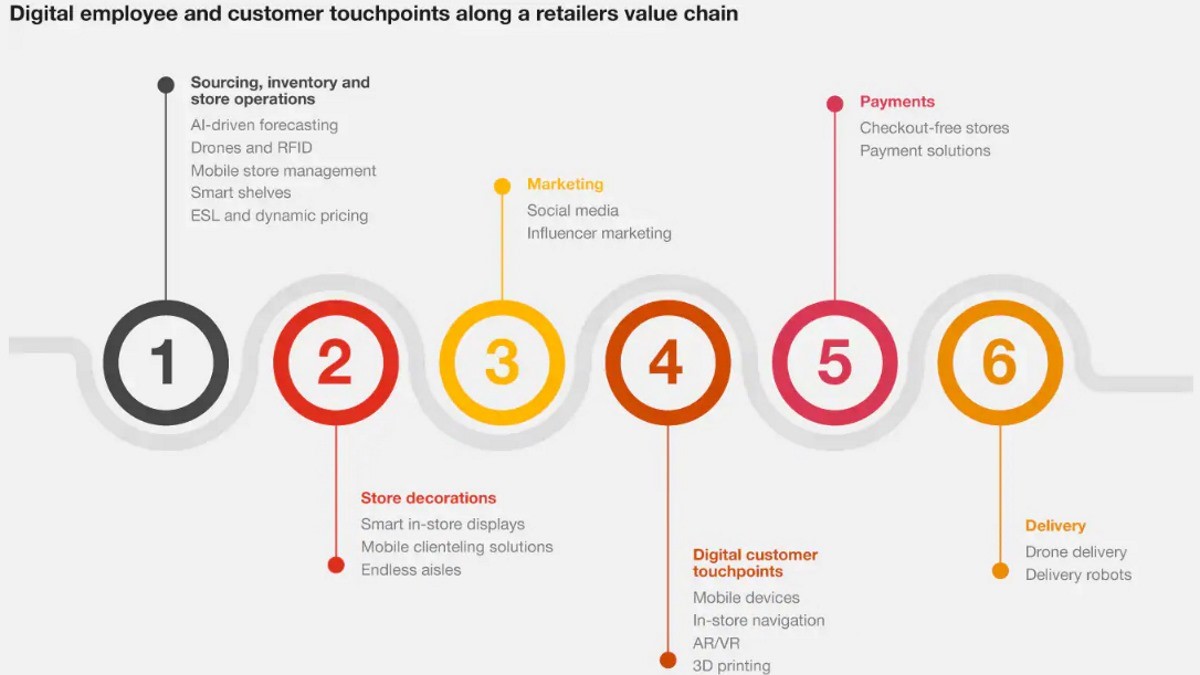Hybrid trade
11 Feb 2021

© Brooke Lark
The digital change is not only boosting the eCommerce in the garden trade. It is also lending the stationary business new momentum.
The online trade is driving the market across all industries. Yet, the stationary trade still plays a key role. Only 14 percent of the consumers exclusively buy online – according to the outcome of a worldwide survey of the market research companies Ipsos and the GfK. The vast majority of the consumers rely on hybrid shopping and want both stationary shops as well as online stores - as well as a seamless shopping experience across all online and offline touchpoints.
Online shopping is changing the customer expectations
More convenient 24/7 shopping from home, a huge international offer of goods, better price comparison options – the advantages of online shopping are changing the behaviour of the customers and their expectations in the stationary trade. Whereas in the past the greatest selection of products possible was called for, today the emphasis lies on advice, service and above all the shopping experience: The customers expect an attractive ambiance, competent personal consulting and convenient shopping without queuing and simple payment methods.
From the sales room to the lifestyle hub
Retail shops are being transformed from sales rooms into places of experience. The garden trade is predestined for this. After all with its wealth of outdoor lifestyle including garden furniture, deco items, BBQ equipment, flower and plant arrangements, garden presentations, colours, shapes and scents, it addresses all of its customers' senses. Events and culinary delights create further well-being experiences – and turn garden centres into perfect lifestyle hubs. There is huge potential in linking up these new experiential worlds with digital applications. The trend researcher, Professor Peter Wippermann, sums it up in a nutshell: "The garden centre of the future will be a combination between a showroom, event and community concept."
Linking the online and offline channels
What does that mean for the dealer? In order to offer their customers a unique shopping experience, they have to invest in two fields: in shop design and in a high-performance digital infrastructure, which makes their business more efficient. "On the one hand, the digitalisation enables the dealer to offer the customer additional services and the possibility of linking online and offline channels with each other. On the other hand it simplifies the processes, logistics and much more," underlined Michael Gerling, Executive Director of the EHI Retail Institute.
Digital touchpoints across the entire value chain
In order to interlink the online and offline trade as efficiently as possible, digital points of contact have to be created across the entire value chain – from the merchandise management through to the payment and delivery systems. In this way, the distributors can at the same time optimise the purchasing experience for their customers.

Digitaler Mitarbeiter- und Kundenkontakt entlang der Wertschöpfungskette des Einzelhandels ©PwC
The digital experience actually starts prior to the purchase
Ideally, the digital shopping experience already begins before the customer enters the garden centre: For example, in the form of information on sought products, current offers and campaigns as well as click & collect orders via the online shop. Using retail analytics the dealers can align their offer of goods with local preferences.
Emotional experiential worlds at the point of sale
In the store, digital signage and "talking" signs show the customers the way and draw their attention to special offers. Augmented reality apps show them what a plant will look like in their living room or a new flower bed in the garden or what effect furniture will have on their terrace. They can design and print out individual greeting cards for a flower arrangement at self-service terminals. Such applications at the point of sale address the emotions of the customers and trigger off purchasing decisions.
Digital payment: Paying without cash or a till
In Germany a lot of goods are still paid for with cash at stationary outlets, however banknotes and coins are on the decline. The future belongs to digital payment systems: Because it is more convenient for the customer to pay with his mobile phone rather than searching for cash, because it is more hygienic – and not least because it enables the dealers access to the customer data, which in turn allows the shopping experience to be further optimised.
It is already possible to pay via a mobile phone in many places and self-scanning systems are already implemented in many supermarkets. Will they take the garden centres by storm soon too? According to the Global Consumer Insights Survey by Price Waterhouse Coopers, 60 percent of the German consumers would use such systems.
Next step: "Frictionless shopping"
"Frictionless shopping" – payment without a till and scanner – is still a vision of the future. Toshiba presented a suitable Internet of Things (IoT) solution at the EuroShop 2020: The customers log in per smartphone on entering the shop. Sensors on the walls and ceiling recognise what they purchase and debit the respective sum automatically.
